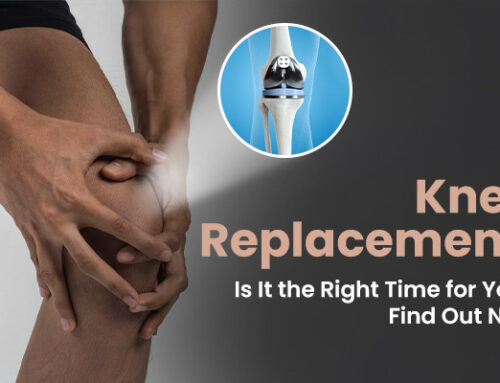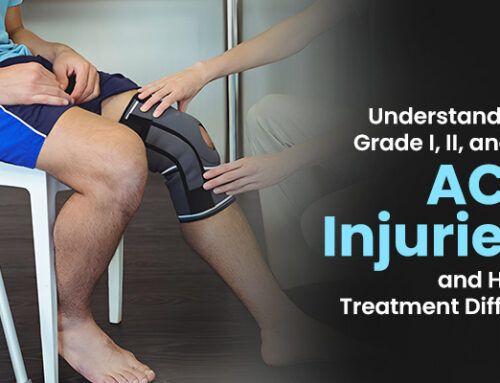Ignoring early joint or bone discomfort can cost you your mobility later. Most people wait until the pain becomes unbearable before visiting a specialist. But catching problems early can save years of discomfort and complicated treatments. This blog explains the key early signs that tell you it’s time for a checkup.
Here, we’ll discuss when to seek care, what symptoms to watch for, and how early detection helps protect your long-term musculoskeletal health.
Why Early Orthopaedic Checkups Matter
An orthopaedic checkup isn’t just for severe pain or injuries. It’s an essential step for anyone with persistent discomfort, stiffness, or limited movement. Early evaluation allows the doctor to detect underlying issues before they worsen.
Preventing Serious Joint and Bone Issues
Many bone and joint problems develop silently. Regular bone health screening helps detect arthritis, osteoporosis, or ligament damage early. When treated early, these conditions respond better and prevent long-term complications.
Improving Mobility and Quality of Life
Early spine and joint care keeps your body strong and flexible. Addressing minor pain and stiffness ensures better mobility and quality of life as you age.
Warning Sign 1: Persistent Joint Pain
If your joints ache daily, it’s a sign you shouldn’t ignore. Continuous discomfort, especially in the knees, shoulders, or hips, may indicate early arthritis and joint screening needs.
When Pain Indicates Something Serious
Temporary soreness from workouts fades quickly. But chronic pain that worsens with movement could mean cartilage damage or joint inflammation. Schedule a joint pain assessment to identify the root cause and prevent degeneration.
Warning Sign 2: Swelling or Redness
Swelling, warmth, or redness around a joint often points to inflammation. These are early signs of orthopaedic issues and need quick medical attention.
Identifying Inflammation Early
Inflammation may stem from arthritis, gout, or an injury. Ignoring swelling can lead to restricted movement or permanent joint damage. The doctor can recommend preventive orthopaedic care and anti-inflammatory therapies.
Warning Sign 3: Stiffness or Limited Range of Motion
If your joints feel stiff in the morning or after sitting, it’s a warning. Limited range of motion can signal degenerative conditions like osteoarthritis.
Recognising Functional Impairment
When stiffness affects daily activities like bending, walking, or lifting, you need a bone and joint problem evaluation. Gentle exercises and early therapy restore flexibility and protect the affected joints.
Warning Sign 4: Frequent Muscle Cramps or Spasms
Muscle cramps or spasms often indicate an underlying musculoskeletal imbalance. They may result from poor posture, dehydration, or nerve compression.
What They Could Mean
Regular cramps can signal calcium or potassium deficiency. In some cases, they suggest nerve pressure or blood flow issues. A proper musculoskeletal health evaluation helps identify the exact reason and restore muscle balance.
Warning Sign 5: Numbness or Tingling in Limbs
Tingling sensations or numbness in your arms or legs can be early signs of nerve compression. These symptoms often arise from spine or disc problems.
Early Nerve or Spine Issues
Ignoring such symptoms can lead to chronic nerve damage or weakness. A timely orthopaedic consultation helps identify conditions like herniated discs or spinal stenosis. Early spine and joint care prevents permanent complications.
Warning Sign 6: Difficulty Walking or Balance Problems
Trouble maintaining balance or walking steadily may indicate joint instability or bone weakness. This is common among older adults or those with untreated injuries.
Indicators of Joint or Bone Weakness
If you find yourself limping, feeling unsteady, or losing balance frequently, it’s time for an evaluation. A detailed orthopaedic checkup helps diagnose hip, knee, or ankle problems before they worsen.
Warning Sign 7: History of Fractures or Injuries
Old injuries can silently affect your current bone structure and alignment. Past fractures or sprains may lead to joint stiffness and early arthritis.
When Past Injuries Require Monitoring
Even healed fractures can cause long-term strain. Regular bone health screening detects early degeneration and allows proper intervention. A preventive approach keeps your musculoskeletal system healthy for years.
The Overlooked Warning Sign: Constant Fatigue or Weak Grip
Muscle fatigue after minimal effort may indicate joint stress or nerve compression. Similarly, a weak grip can be a sign of carpal tunnel syndrome or early arthritis.
Why You Shouldn’t Ignore These Symptoms
Small signs like these often precede more visible orthopedic issues. Regular orthopedic checkups detect the root cause and help prevent progression through timely care and lifestyle changes.
How an Orthopaedic Checkup Works
An orthopaedic checkup is simple, thorough, and non-invasive. It involves physical assessment, diagnostic imaging, and treatment planning.
Physical Examination and Imaging
The doctor evaluates your posture, flexibility, and pain points. X-rays, MRIs, or bone density scans help pinpoint exact causes. This comprehensive evaluation ensures accurate orthopaedic diagnosis and personalised treatment.
Personalised Treatment Plans
After diagnosis, the doctor creates a tailored care plan. It may include physiotherapy, medication, or minor interventions. Regular follow-ups help monitor improvement and prevent future flare-ups.
With early care, even chronic pain becomes manageable. Advanced orthopaedic checkups now focus on personalised recovery rather than generalised treatments.
When to Book a Preventive Orthopedic Visit
You don’t have to wait for unbearable pain to visit a specialist. A proactive approach ensures better bone and joint problems management.
Book a checkup if:
- You feel constant joint stiffness or weakness.
- You notice visible swelling or deformity.
- You’ve had multiple minor injuries recently.
- You struggle with flexibility or balance.
Preventing complications is easier than repairing damage later. Regular visits to an orthopedic doctor keep your bones, joints, and muscles healthy for years.
Book Your Orthopaedic Checkup Today
Ignoring early signs can lead to long-term complications. Don’t wait for pain to disrupt your lifestyle. Whether it’s stiffness, swelling, or an old injury, early diagnosis makes recovery faster and smoother.
Reach out to an Expert
For expert care, consult Dr Prashant Arya, a leading orthopaedic doctor in Jamshedpur. With years of experience in joint pain assessment, spine and joint care, and preventive orthopaedic care, he ensures complete musculoskeletal well-being. His patient-focused approach and advanced diagnostic tools help detect and treat problems before they escalate.
Book your orthopaedic consultation today with Dr Prashant Arya for expert guidance and long-term joint health. Stay active, stay pain-free, and take charge of your bone and joint wellness today.
People Also Ask
- When should you visit an orthopaedic doctor?
Visit when you have persistent pain, swelling, or stiffness that lasts for weeks.
- How often should you schedule a bone health screening?
Once a year is ideal, especially for adults over 40.
- Can exercise help prevent joint and bone problems?
Yes, low-impact exercises strengthen muscles and support joint stability.
- What tests are done during an orthopaedic checkup?
Physical exams, X-rays, and sometimes MRIs assess bone and joint health.
- How can you maintain long-term musculoskeletal health?
Eat calcium-rich foods, exercise regularly, and avoid prolonged sitting or injuries.







Leave A Comment